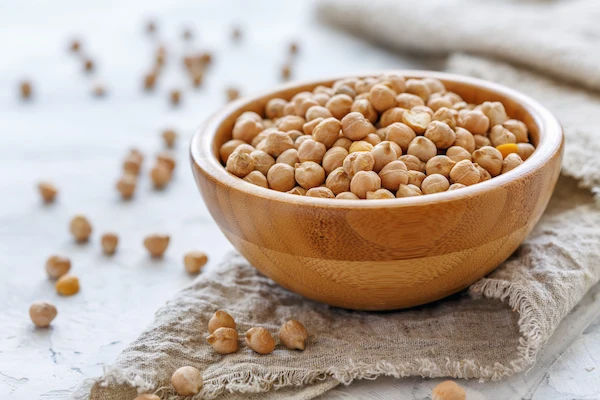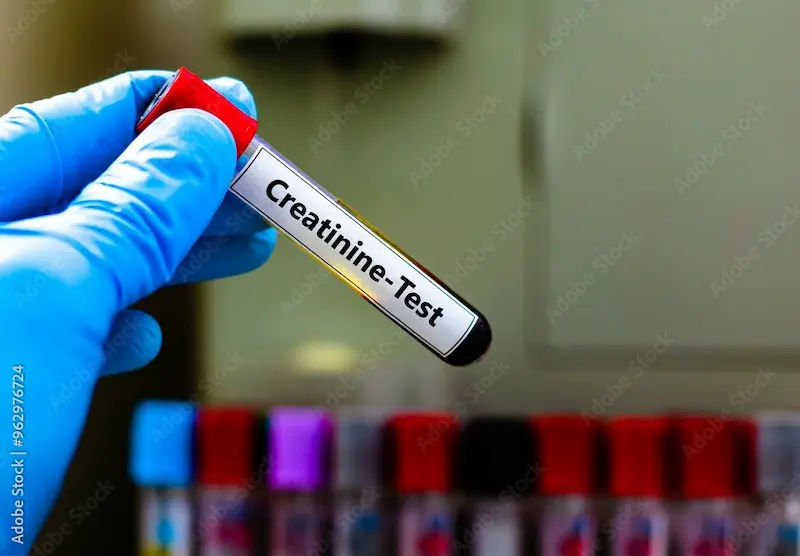Don't Ignore Muscular Pain: A Guide to Causes, Relief, and Warning Signs
Learn about the causes, relief methods, and warning signs of muscular pain. Discover when soreness is normal and when it signals a serious underlying issue that needs medical attention.

Written by Dr. J T Hema Pratima
Reviewed by Dr. Shaik Abdul Kalam MD (Physician)
Last updated on 12th Oct, 2025
Introduction
That familiar ache after an intense workout or a long day—muscular pain is a universal human experience. Often, it's a simple sign of your body working hard and repairing itself. But what happens when the pain lingers, feels different, or appears without a clear reason? While it's tempting to brush off muscle aches as a minor nuisance, understanding their language is crucial for your long-term health. Ignoring persistent or severe muscular pain can sometimes mean overlooking your body's signal for a more serious underlying issue. This guide goes beyond basic advice, empowering you to distinguish between everyday soreness and warning signs that demand attention. We'll explore the common causes, from overexertion to stress, and delve into the specific symptoms you should not ignore. You'll also learn effective relief strategies and when it's time to seek professional help, ensuring you can make informed decisions about your well-being.
What Exactly is Muscular Pain?
Muscular pain, medically known as myalgia, refers to discomfort or inflammation in the soft tissues that connect your bones and support movement. It can be localised to one area, like a pulled muscle in the shoulder, or widespread, affecting multiple muscle groups simultaneously. This pain can range from a mild, dull ache to a sharp, debilitating sensation. Understanding that pain is a communication tool is the first step; it’s your body’s way of saying, "Something needs attention here."
Muscle Pain vs. Joint Pain: Knowing the Difference
A critical skill is differentiating muscle pain from joint pain, as they point to different problems. Muscle pain is often felt in the muscles themselves and is typically aggravated by movement or palpation of the muscle. It might feel like a deep ache, soreness, or cramp. In contrast, joint pain is usually felt within or around a joint (like knees, hips, or shoulders) and is frequently accompanied by stiffness, swelling, and a reduced range of motion. Joint pain often worsens with bearing weight or specific movements. If your constant muscle aches and fatigue are paired with joint swelling, it's a stronger indicator to consult a healthcare professional for an accurate diagnosis.
Consult Top Specialists for Personalised Tips
Common Causes of Everyday Muscle Aches
Most muscle pain falls into the "generally harmless" category and resolves with time and self-care. Recognising these common culprits can provide reassurance.
Overexertion and Delayed Onset Muscle Soreness (DOMS)
The most familiar type of muscle pain is DOMS, which appears 24 to 72 hours after unfamiliar or intense physical activity. It's caused by microscopic tears in muscle fibres, a normal part of the strengthening process. This is the "good" kind of pain that signifies adaptation. Effective home remedies for sore muscles after workout include light activity like walking, proper hydration, and gentle stretching.
Tension and Stress-Related Muscle Tightness
Your mind and muscles are deeply connected. During periods of stress or anxiety, your body enters a "fight-or-flight" mode, causing muscles to contract unconsciously. Common areas for this chronic muscle tension are the neck, shoulders, and back. Over time, this can lead to persistent aches and headaches. Managing stress through meditation, deep breathing, or yoga can be a powerful way to address this type of pain at its source.
When Muscular Pain is a Red Flag: Signs You Must Not Ignore
This is the core of the message: not all pain is created equal. Certain symptoms transform a simple ache into an urgent message.
Signs of Infection or Systemic Illness
Muscle pain can be a symptom of broader illnesses like the flu or COVID-19. However, be alert if the pain is accompanied by a high fever, significant swelling or redness around a muscle, or a general feeling of being unwell. These could indicate a serious infection, such as cellulitis or even sepsis, which requires immediate medical attention.
Indicators of a Serious Muscle Injury
A sudden, sharp pain in muscle with no injury can be misleading. It might indicate a severe strain or tear. Key warning signs include:
- Inability to bear weight or use the limb.
- Significant bruising or swelling that appears rapidly.
- A "popping" sensation at the time of pain, which could suggest a tendon rupture.
- Numbness or tingling, indicating possible nerve involvement.
Symptoms Pointing to Underlying Chronic Conditions
If your muscle pain is widespread, persistent for weeks, and not linked to activity, it could signal a chronic condition. Pay attention if you experience:
- Persistent fatigue and non-restorative sleep alongside the pain (common in fibromyalgia).
- Weakness that makes simple tasks like climbing stairs difficult.
- Dark-coloured urine after intense exercise, which is a hallmark symptom of rhabdomyolysis, a serious condition where muscle breakdown products damage the kidneys. This is a medical emergency.
If you experience any of these red-flag symptoms, it is crucial to consult a doctor. If symptoms like severe weakness or dark urine appear, seeking prompt medical evaluation, for instance through an online consultation with Apollo24|7, can provide immediate guidance on the necessary next steps.
Effective At-Home Strategies for Muscle Pain Relief
For common, non-alarming muscle aches, several proven methods can promote healing and comfort.
The R.I.C.E. Method: A First-Line Defence
For acute injuries or sudden soreness, the R.I.C.E. protocol is highly effective:
- Rest: Avoid activities that cause pain.
- Ice: Apply an ice pack wrapped in a towel for 15-20 minutes every 2-3 hours to reduce inflammation.
- Compression: Use an elastic bandage to minimise swelling.
- Elevation: Raise the injured area above heart level to help drain fluid and reduce swelling.
- Soothing Therapies: Heat, Stretching, and Massage
For stiffness and chronic tension, different approaches work better:
- Heat Therapy: A warm bath or heating pad can relax tight muscles and improve blood flow.
- Gentle Stretching: Slow, controlled stretches can alleviate stiffness. Avoid bouncing and never stretch to the point of sharp pain.
- Self-Massage: Using a foam roller or your hands to apply pressure can help release muscle knots (trigger points).
Professional Medical Treatments for Persistent Pain
When home care isn't enough, it's time to seek professional help.
When to Consult a Doctor
As a general rule, you should see a doctor if your muscle pain:
- Persists for more than a week without improvement.
- Is severe and limits your mobility.
- Is accompanied by any of the red flags mentioned earlier.
If your condition does not improve after trying these methods, book a physical visit to a doctor with Apollo24|7 for a comprehensive examination.
Diagnostic Steps: What to Expect
A doctor will take a detailed history and perform a physical exam. They may order tests to check for underlying issues. Apollo24|7 offers convenient home collection for tests like vitamin D or HbA1c, which can help rule out deficiencies or conditions like diabetes that can contribute to muscle pain.
Treatment Options: From Physical Therapy to Medication
Depending on the diagnosis, treatment may include:
Physical Therapy: A therapist can design a program to strengthen muscles, improve flexibility, and correct imbalances.
Medications: This could range from stronger prescription anti-inflammatories to muscle relaxants or treatments for specific conditions like fibromyalgia.
Specialised Interventions: In some cases, corticosteroid injections or other procedures may be recommended.
Get Your Health Assessed
Conclusion
Muscular pain, in its many forms, is an inescapable part of an active life. While often benign, it demands our respect and attention. By becoming an informed advocate for your own health, you can confidently navigate the spectrum of muscle discomfort—from effectively soothing post-workout soreness to recognising when that persistent ache is a crucial warning sign. The key takeaway is not to fear pain, but to understand it. Empower yourself with the knowledge of when to rest, when to apply home remedies, and most importantly, when to seek professional guidance. Taking proactive steps ensures that minor issues don't evolve into major problems, allowing you to maintain your mobility and quality of life for years to come. If you're ever in doubt about your muscular pain, erring on the side of caution by consulting a healthcare professional is always the wisest choice.
Consult Top Specialists
Consult Top Specialists for Personalised Tips

Dr. Sharad Sharma
General and Laparoscopic Surgeon
25 Years • MBBS, MS( Gen. Surg.), Dip. In Adv. Lap Surg., FALS, FMAS, FIAGES BARIATRIC SURGEON .
Mumbai
Apollo Hospitals CBD Belapur, Mumbai

Dr. Amrutha G
General Physician/ Internal Medicine Specialist
10 Years • MBBS,DNB(family medicine), Diabetologist-CCEBDM,CCGDM
Bengaluru
Apollo Clinic, Sarjapur Road, Bengaluru

Dr. Anand Ravi
General Physician
2 Years • MBBS
Bengaluru
PRESTIGE SHANTHINIKETAN - SOCIETY CLINIC, Bengaluru

Dr. Aparna Bhasker
Bariatrician
18 Years • MBBS MS
Mumbai
Apollo Hospitals CBD Belapur, Mumbai

Dr. Sunil Kaul
General Surgeon
30 Years • MBBS, MS, FICS, FIMSA, FMAS
Delhi
Apollo Hospitals Indraprastha, Delhi
(25+ Patients)
Consult Top Specialists

Dr. Sharad Sharma
General and Laparoscopic Surgeon
25 Years • MBBS, MS( Gen. Surg.), Dip. In Adv. Lap Surg., FALS, FMAS, FIAGES BARIATRIC SURGEON .
Mumbai
Apollo Hospitals CBD Belapur, Mumbai

Dr. Amrutha G
General Physician/ Internal Medicine Specialist
10 Years • MBBS,DNB(family medicine), Diabetologist-CCEBDM,CCGDM
Bengaluru
Apollo Clinic, Sarjapur Road, Bengaluru

Dr. Anand Ravi
General Physician
2 Years • MBBS
Bengaluru
PRESTIGE SHANTHINIKETAN - SOCIETY CLINIC, Bengaluru

Dr. Aparna Bhasker
Bariatrician
18 Years • MBBS MS
Mumbai
Apollo Hospitals CBD Belapur, Mumbai

Dr. Sunil Kaul
General Surgeon
30 Years • MBBS, MS, FICS, FIMSA, FMAS
Delhi
Apollo Hospitals Indraprastha, Delhi
(25+ Patients)
More articles from General Medical Consultation
Frequently Asked Questions
What does it mean if I have a sharp, stabbing pain in my muscle without any injury?
A sudden sharp pain without a clear cause could indicate a muscle strain, tear, or a nerve-related issue like a pinched nerve. If the pain is severe, limits your movement, or is accompanied by swelling, it's important to get it evaluated by a doctor to determine the exact cause.
How can I tell the difference between normal muscle soreness and something serious?
Normal soreness (DOMS) is typically symmetrical (affects both sides), feels like a dull ache, and improves with movement and time. Serious pain is often sharp, localised, may involve bruising or swelling, and doesn't improve with rest. The presence of 'red flag' symptoms like fever or weakness is a clear differentiator.
Why do I have constant muscle aches and fatigue all over my body?
Widespread pain and fatigue can be linked to various factors, including chronic stress, vitamin D or other nutrient deficiencies, sleep disorders, or underlying conditions like fibromyalgia or chronic fatigue syndrome. A doctor can help investigate the root cause through a detailed history and appropriate tests.
Are over-the-counter pain relievers safe for long-term muscle pain management?
While OTC medications like ibuprofen can be effective for short-term relief, long-term daily use can lead to side effects, including stomach, kidney, or cardiovascular issues. They should not be used as a permanent solution. If you find yourself relying on them consistently, it's a sign to see a doctor for a long-term management plan.
When is muscle pain considered an emergency?
Seek emergency care if muscle pain is sudden and extremely severe, especially if it's followed by dark-coloured urine (a sign of rhabdomyolysis), if you have a high fever and stiff neck, or if the pain results from a major trauma like a fall or accident.





